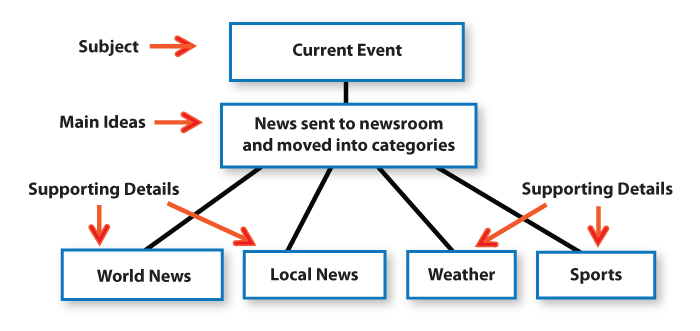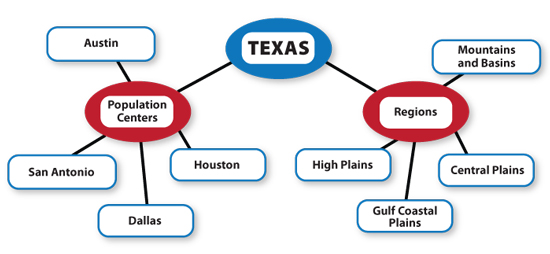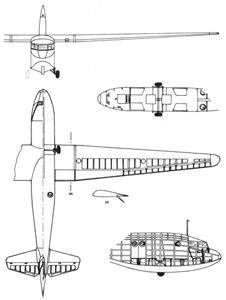So far you have progressed from note-taking and listing to graphic organizers, and you know that each of these tools can be helpful for arranging ideas. Now you’re ready to create the working outline mentioned at the beginning of this lesson. A “working” outline is a work in progress. As you do more planning for your essay, the working outline will change, possibly becoming longer and more detailed.

Source: NBC Nightly News Broadcast, Jeff Maurone, Wikimedia
Think about the way news is organized after reporters bring their stories into the newsroom. The people in the production room (shown in the picture above) break each broadcast into categories and sort out the stories into segments as follows:
| News | Weather | Sports |
|---|---|---|
| World News | National Weather | Professional (Baseball, Football, Basketball, etc.) |
| National News | Local Weather | College (Baseball, Football, Basketball, etc.) |
| Local News | Weather Forecast | High School (Baseball, Football, Basketball, etc.) |

Do you see how the information in each box is related to the rest of the diagram? The first box, “Current Events,” is the topic or heading. If you were to use this same format, your topic would be “How Growing Up in Texas Has Influenced My Life.” The next box contains the main idea; your main idea will eventually become your thesis. The supporting details you include might come from finding preliminary sources, prewriting exercises such as listing, or from both, depending on whether you are allowed to research your topic.
Although the information will be different, a visual representation for your essay might look very similar to the graphic organizer above. In the previous section you used the following mind map to associate regions and cities in Texas.

If we use the information to create an outline, it would look something like this:
Working Outline of Texas Regions and Population Centers
- Population Centers
- Houston
- Dallas
- San Antonio
- Austin
- Regions
- High Plains
- Gulf Coastal Plains
- Central Plains
- Mountains and Basins

Source: Antonow A7 blueprints, Antonov Design Bureau,
Wikimedia
Designing a working outline is much like drawing a blueprint or writing a set of instructions on how to build something. For your paper to be well structured, it must have a good framework or outline. An outline doesn’t have to come from a mind map, though. It can be designed using the information gathered from taking notes, making lists, or completing a graphic organizer.
The outline mainly needs to provide a good blueprint as you write the first draft of an essay. You don’t need to cover everything that you will write, but you must include an introduction, a middle, a conclusion, and the supporting details for each of these sections.
Do you feel organized and ready to write? Outlining is a great way to categorize your information so that you can write a clear, well-organized paper. It doesn’t matter whether you are writing an expository or persuasive essay; your focus and supporting details need to be as strong as possible.
So the next time your teacher assigns an essay or you are required to write one as part of a test, you can use note taking, graphic organizers, listing, and working outlines to help you plan your first draft.